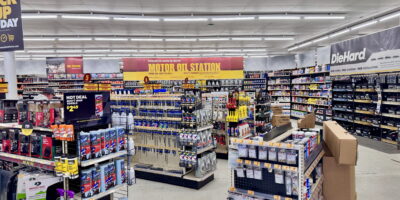Auto Painting Tips
Whether you’re a car enthusiast or just want to refresh an old vehicle, knowing how to paint a car properly can save you money and time. Auto painting isn’t only about aesthetics. It protects the car’s metal from rust and corrosion. Here’s a guide that will help you get started with auto painting.
Understand the Basics
A good paint job involves more than slapping on a fresh coat. It’s about patience, precision, and the right tools. First, know the types of paints commonly used, such as acrylic lacquer, acrylic enamel, and urethane. Each has unique properties. Urethanes, for instance, are known for durability and shine, while acrylic enamels offer a broader range of colors. Remember, the type of paint affects the drying time, application method, and the final finish.
Necessary Equipment
- Air compressor: Ensures spray paint consistency.
- Spray gun: Invest in a quality one for even applications.
- Sandpapers: Different grits (ranging from 80 to 2000) for surface preparation and finish.
- Masking tape and paper: Protects areas you don’t want to paint.
- Paint thinners and cleaners: Essential for cleanup and thinning the paint.
- Personal protective gear: Masks, gloves, and goggles protect from fumes and sprays.
Surface Preparation
Before any painting, the surface must be clean and smooth. Start by washing the car with soap and water to remove dirt and grease. Once dry, sand the entire surface to remove old paint, rust, and imperfections. Begin with coarse sandpaper to strip away the majority, then gradually move to finer grits to smooth the surface. The right technique is sanding in circular motions, which helps in achieving an even finish.
Priming the Car
Primer is vital for paint adherence and durability. It also helps cover up old paint and minor scratches. Ensure the car is in a dust-free environment. Use masking tape and paper to cover areas not needing paint. Primer should be applied in thin, even coats. Allow each coat to dry before applying the next. Three coats are often sufficient. Once primed, use fine sandpaper to smooth out any imperfections before painting.
Mixing the Paint
Mixing paint correctly affects the spraying process significantly. Follow the manufacturer’s instructions for the correct paint-to-thinner ratio. Usually, this ratio is about 50/50, but it can vary. Mixing thoroughly prevents clogs in the spray gun. Make small quantities to avoid wastage. Remember that temperature and humidity can impact the paint’s viscosity, so adjust accordingly.
Painting Techniques
Start by practicing your spraying technique on a scrap piece of metal. This helps you gauge the spray gun’s pattern and pressure. When ready, hold the spray gun about six inches from the car’s surface to get an even layer. Move the gun in steady, horizontal motions overlapping each stroke by 50%. Avoid extreme angles which cause drips. Apply at least three coats; two base coats and a clear coat for protection and shine. Don’t rush between coats. Ensure the previous layer is dry before the next application.
Drying and Curing
Proper drying is essential. Leave the painted car in a dust-free environment. The curing process can take several days, depending on the paint type and environmental conditions. Avoid any polishing or waxing at this stage as the paint needs time to harden fully. If possible, wait at least a couple of weeks before taking the car out for polishing.
Final Touches
Once the paint is fully cured, inspect the surface for faults. Minor imperfections can be dealt with using a process called cutting, where fine sandpaper and rubbing compound are used to smooth the paint’s top layer. Polish the surface to bring out the shine. Waxing adds an extra layer of protection. Be gentle; abrasive materials can harm the new finish.
Environmental Considerations
Auto painting involves chemicals that can be harmful to the environment and health. Always use protective gear, and ensure adequate ventilation when working indoors. Dispose of paint and solvents responsibly, in accordance with local regulations. Opting for environmentally friendly paints, like waterborne finishes, reduces the ecological impact.
Common Mistakes to Avoid
- Skipping surface preparation can lead to peeling paint.
- Improper sanding might leave visible imperfections.
- Using incompatible thinners may cause bubbling.
- Rushing the drying process results in an uneven finish.
- Neglecting to clean equipment can prevent smooth applications.
Be methodical and patient. A well-painted car enhances value and pride of ownership. Follow these tips, and enjoy the process of auto painting.
“`
Recommended Restoration Resources
Planning a classic car restoration project? These guides will help you tackle every aspect of bringing a vintage vehicle back to life:
Complete Restoration Guide
The Complete Idiot’s Guide to Restoring Collector Cars – A comprehensive guide covering everything from finding the right project car to final assembly, with expert tips on bodywork, mechanical systems, and finishing.
Interior Restoration Guide
How to Restore Classic Car Interiors – Step-by-step instructions for restoring seats, carpets, headliners, and trim to factory-fresh condition.
As an Amazon Associate, we earn from qualifying purchases.



